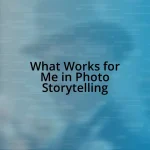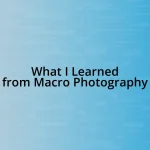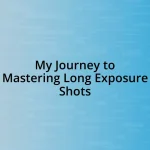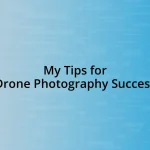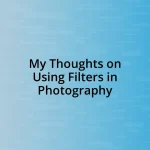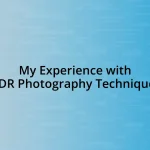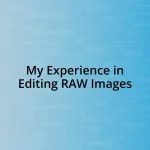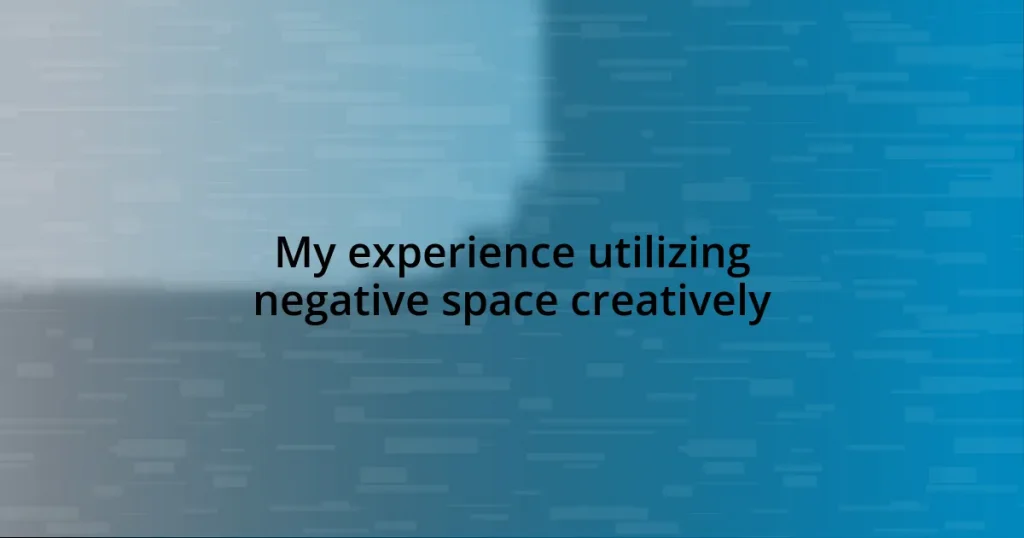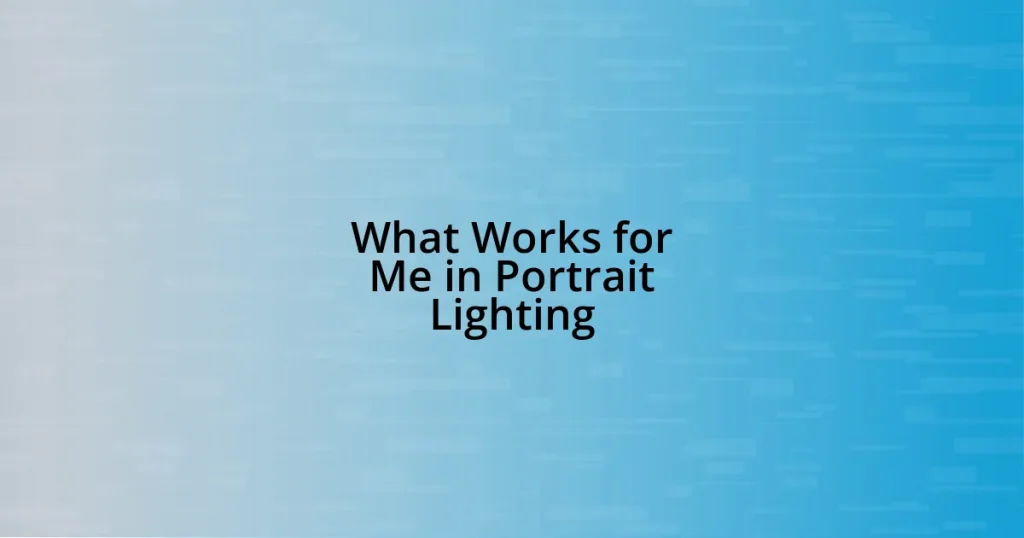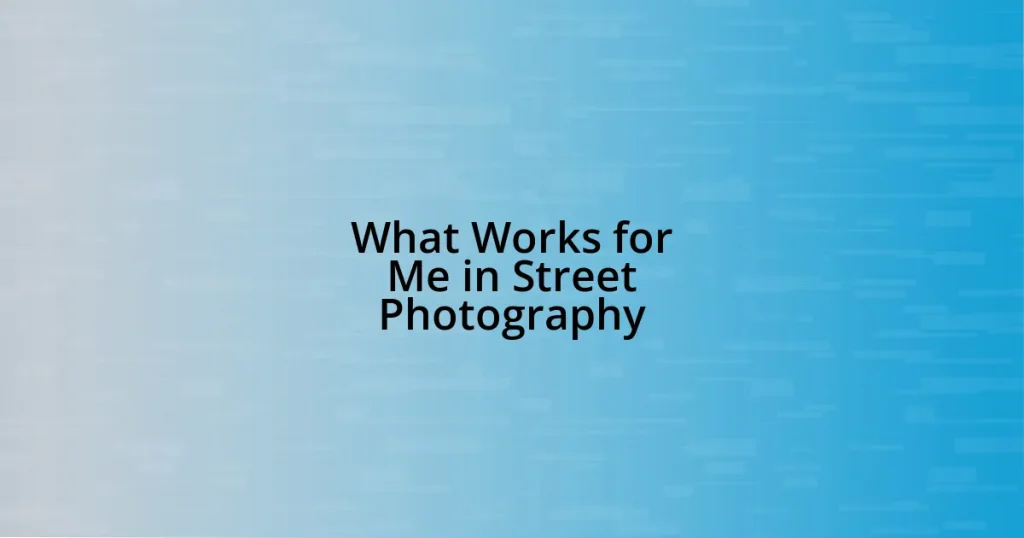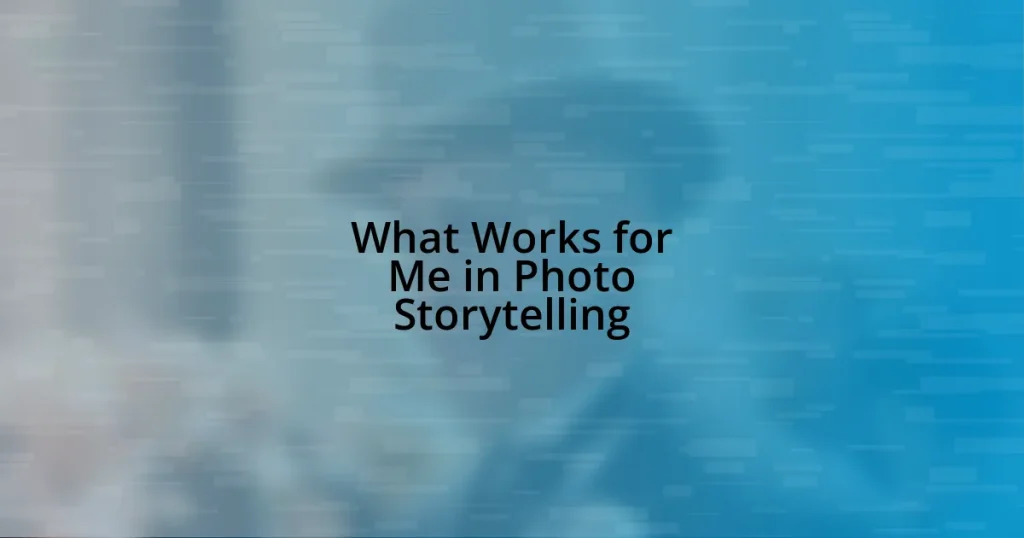Key takeaways:
- Negative space enhances visual communication by providing balance, simplifying complex ideas, and evoking emotions through absence.
- Techniques like layering, framing, and using contrasting shapes can creatively highlight and engage viewers with negative space.
- Utilizing negative space in various projects, such as greeting cards and logos, can create impactful narratives and connections with the audience.
- Focusing on a focal point, simplifying compositions, and considering the viewer’s perspective are essential strategies for mastering negative space in design.
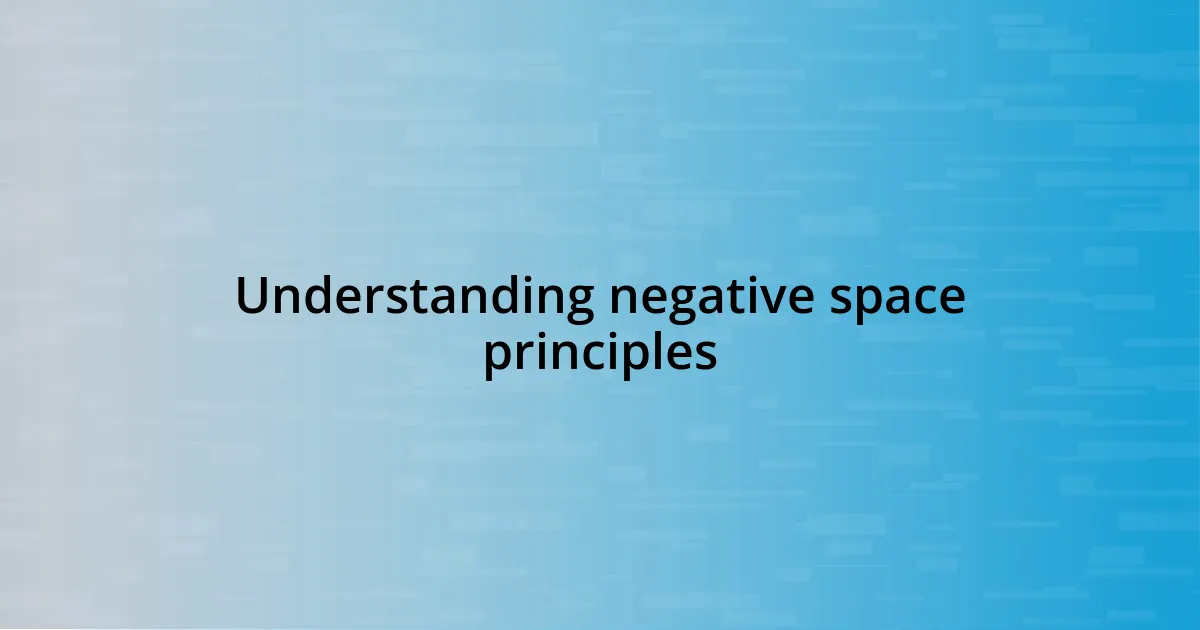
Understanding negative space principles
Negative space is often thought of as merely the empty areas surrounding objects in a design, but to me, it’s like the unsung hero of visual communication. I remember the first time I deliberately used negative space in my artwork; I was amazed at how it not only added balance but also gave the viewer’s eye a place to rest. It’s an exciting concept that can enhance the overall impact of your work if you embrace it creatively.
When I consider the principles of negative space, I often think about how it can simplify complex ideas. Have you ever looked at a logo and felt an instant connection, only to realize that the simplicity came from the thoughtful use of its surroundings? I’ve found that employing negative space can transform an overcrowded design into a clean, effective statement.
One of the aspects I find most rewarding is the challenge of making the unseen just as powerful as the seen. There was a time when I applied this principle to a poster design and decided to leave out certain elements. The result was an intriguing piece that invited viewers to engage with what wasn’t there, sparking curiosity. Isn’t it fascinating how absence can evoke strong emotions and thoughts just as much as presence?
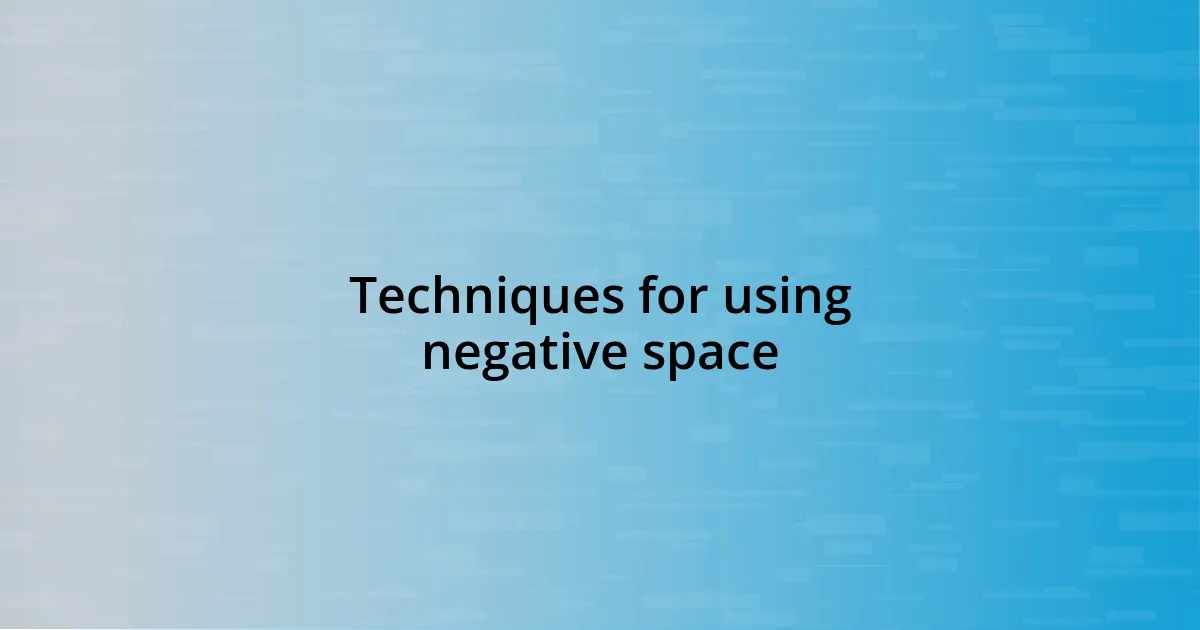
Techniques for using negative space
When diving into techniques for using negative space, one of my favorite approaches is to create depth through layering. I remember a specific project where I stacked elements at varying opacities. This not only helped the main subject stand out, but also lent an ethereal quality to the piece. It’s like watching the layers of a cake come together—each slice reveals something unique, yet they all coexist beautifully.
Another technique I’ve enjoyed is framing key elements within negative space. For instance, in a recent piece, I positioned subjects so that they naturally emerged from the surrounding empty areas. The effect was captivating; it drew the viewer’s eye right where I wanted it to go, almost like a spotlight revealing hidden gems. It’s those little surprises that keep the audience engaged and coming back for more.
Lastly, experimenting with contrasting shapes is an engaging method to highlight negative space. In one of my artworks, I used bold geometric forms to contrast soft organic lines. The strong shapes didn’t just serve as a backdrop; they became part of the story by emphasizing the fluidity of the softer edges. It made me realize how powerful the interplay of form can be, enhancing both clarity and excitement in a design.
| Technique | Description |
|---|---|
| Layering | Creates depth by stacking elements at varying opacities, enhancing the main subject. |
| Framing | Positioning subjects to emerge from negative space, drawing attention naturally. |
| Contrasting Shapes | Utilizing bold shapes to emphasize and enhance softer lines, creating visual interest. |
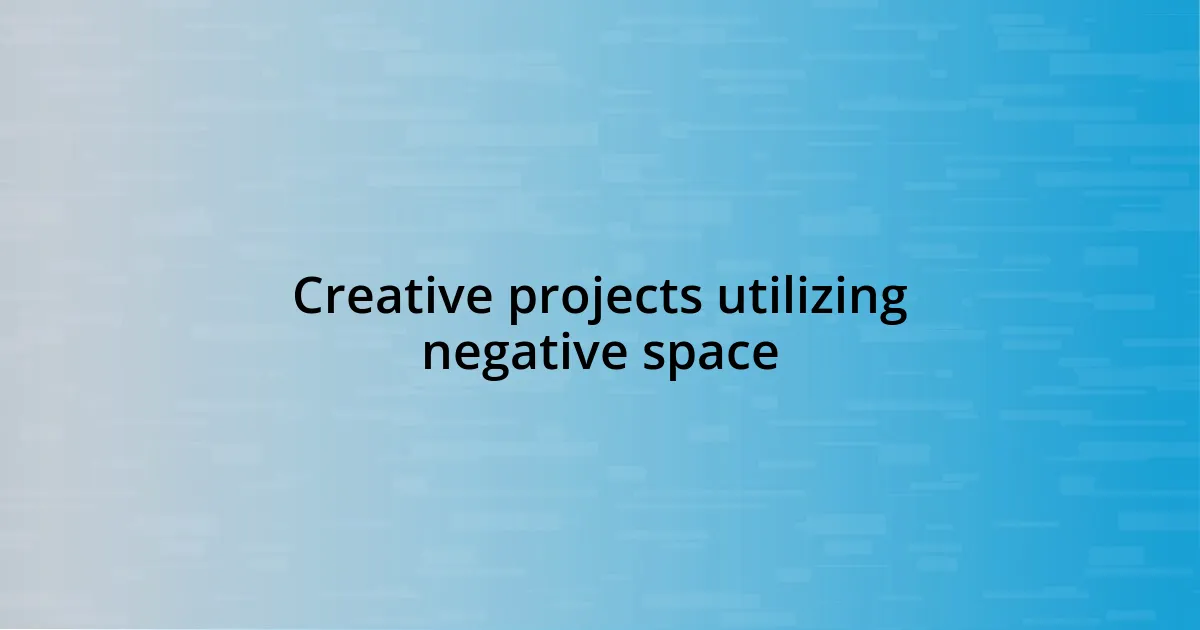
Creative projects utilizing negative space
When I reflect on my creative projects utilizing negative space, several memorable experiences come to mind. One project that stands out involved designing a series of greeting cards. I used silhouettes to represent various emotions, but it was how I surrounded those shapes with ample empty space that really captured the essence of each feeling. The subtlety of it all struck a chord with me—there’s something deeply moving about the space that allows emotions to breathe and resonate with the viewer.
- Book Illustrations: I created illustrations where the absence of background allowed the characters to evoke stories using only subtle outlines.
- Photography: In a photography project, I focused on a lone tree against a vast sky, emphasizing the tree’s solitude through negative space that conveyed a sense of freedom and introspection.
- Stop Motion Animation: I once developed a stop-motion video that played with negative space by using minimalistic sets, focusing the audience’s attention on the narrative rather than the surroundings.
Another creative endeavor I enjoyed was designing a minimalistic logo for a local café. By employing the empty spaces strategically, I was able to merge the initials of the café’s name into the coffee cup’s negative space. The moment the owner saw it, their eyes lit up; they felt a meaningful connection that echoed their brand’s cozy and inviting atmosphere. It reinforced my belief that negative space is not just about what you leave out, but about what you invite the viewer to consider instead.
- Branding: In another instance, I worked on a branding project where I used negative space to imply movement in the logo for a fitness brand.
- Public Art Installations: I participated in a collaborative art installation that relied heavily on empty spaces to provoke thought around urban living.
- Infographics: When designing infographics, I often utilize negative space to declutter information, allowing messages to stand out without overwhelming the viewer.
These experiences highlighted to me the transformative power of negative space, turning mere visuals into thought-provoking narratives that engage and invite deeper interpretation.
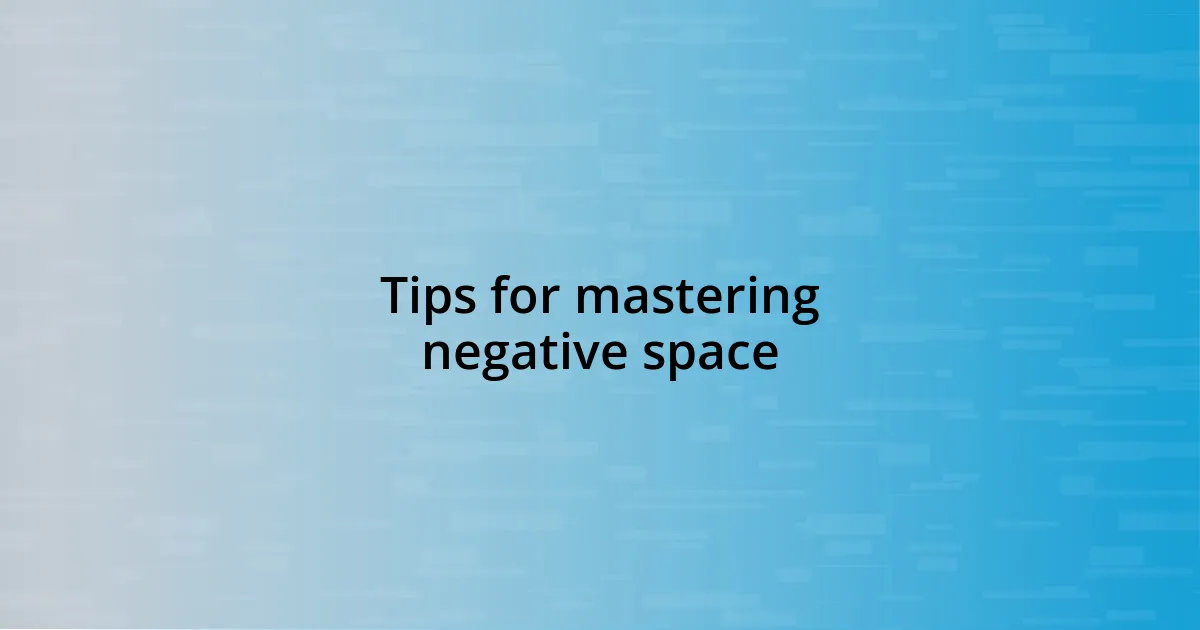
Tips for mastering negative space
One key tip for mastering negative space is to start with a focal point in mind. I often ask myself, “What do I want the viewer to notice first?” This question helps me design the surrounding negative space intentionally, guiding the viewer’s eyes to that critical element. In one of my earlier designs, I emphasized a flower by placing it off-center in an expansive field, allowing the vastness around it to evoke a feeling of isolation and beauty.
Another effective strategy is to simplify your compositions. I remember the first time I tried minimalism—it was a challenge to let go of excess elements. However, when I removed the clutter, the central object truly began to shine. The blank space acted as a visual breath for the viewer, making the work feel lighter and more inviting. Have you ever tried stripping down your designs? It might surprise you how powerful that decision can be.
Lastly, considering the viewer’s perspective is crucial. Think about the story you want to convey. By asking myself, “How will this be interpreted?” I often make choices that enhance the narrative through negative space. For instance, when I illustrated a calm sea with a small sailboat, the expansive water around it not only highlighted the boat’s journey but also conveyed a sense of tranquility. It’s a win-win—when negative space tells a story, everyone benefits.



